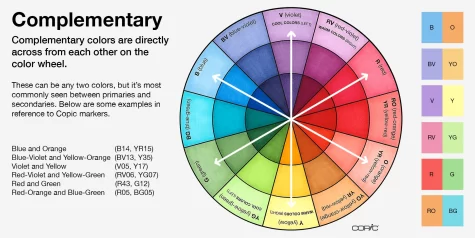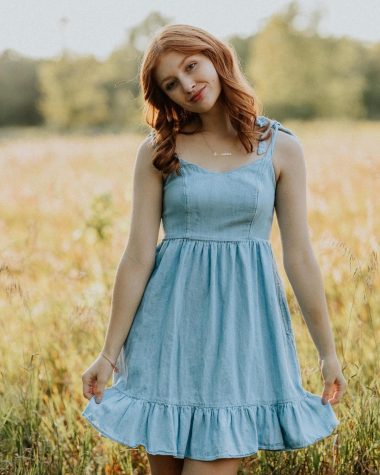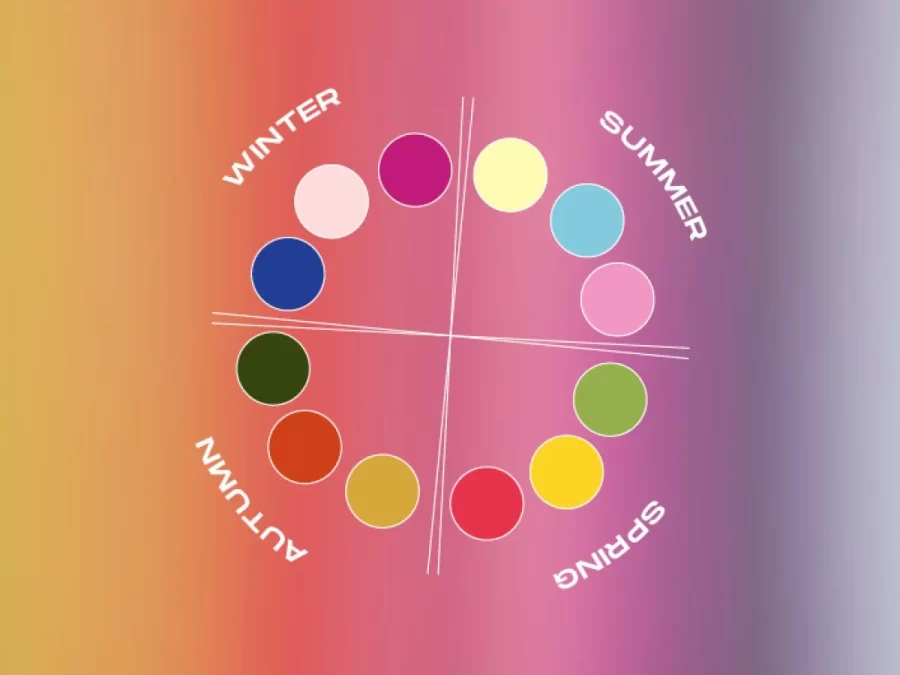What Colors Should You Wear?
How the color wheel and fashion go hand-in-hand.
Why do certain colors look good on me, and why do others not?
Well, way back when we were in grade school, we were shown the color wheel in art class. The color wheel shows the way colors contrast and blend, essentially proving what looks good together, and what does not look good together. Colors that are derived from the same color palette are appreciated because of the way they blend smoothly, like they “match” and look “correct” together. On the other hand, complementary colors are especially pleasing to the eye because of photoreceptor cells. These cells contribute to color vision and perceive different types of light in the color spectrum- making complementary colors, like yellow and purple, pop in a beautiful way.
This concept reigns true when it comes to fashion and make up as well- which is why it is important to know what color palette you are.
The general rule is that skin with cool undertones look best with greys, browns, blues, greens and purples, where skin with warm undertones look best with either bright or light colors. Skin with neutral undertones looks great in bold, bright colors.
If you’re active on TikTok, you might have seen the trend where people used the seasonal color analysis filter. This filter showed the user beside a color palette for fall, winter, spring, and summer, showing which one best matched the user’s coloring and features. Typically, people who use this filter think they look best with colors complimentary to them- darker, colder colors against paler faces, and warmer, brighter colors blending with warmer faces- and although it’s just a silly filter, trying it out could be a great way to see what colors you should implement into your wardrobe and make-up routine.
This is also why people with blue eyes often wear blue, or why people with green eyes often wear green- colors are able to compliment and bring out desired features.
It is simple to choose colors that are flattering. Start by understanding skin tones: warm and cool. Warm complexions have yellow undertones, and cool complexions have pink undertones. No matter how much you may or may not tan, your skin tone will remain constant as well. A good way to see this is testing if silver or gold jewelry makes your skin look healthier: silver will flatter cool, and gold will flatter warm. Then, decide your season. For summer, your skin has blue, red, or pink undertones, and your hair and eye color contrast gently against your skin color. Winter skin has blue, red, or pink undertones that your skin contrast sharply against your hair and eye color- like pale white skin and black hair. Spring skin has golden, cream, and peach undertones. Springs often have blonde or red hair, freckles, rosy cheeks, and blue or green eyes. And Fall skin has golden, warm or yellow undertones.
At this point, you will be able to choose jewelry, clothes, and make up that compliments your natural appearance:
Seasonal appearance in clothes:
Summer: Try to wear lilac, pale blue, pastel and soft neutral shades with pink-red undertones. Softer colors work best.
Winter: You should wear clothes with blue or pink undertones, sharp colors like white, black, and navy blue.
Spring: Wear clothes with yellow and orange undertones like peach, light yellows, and light oranges.
Fall: Choose to wear deep and warm colors like browns, caramel, beige, reds, and greens.
How skin tone plays into makeup:
Porcelain: This skin looks best in soft pink and beige tones but avoid orange/red. Nude and peach for a daily shade and avoid gray-based makeup like frosty eyeshadows- they tend to take away from natural coloring.
Medium-fair skin: Try to wear makeup with yellow and pearlescent undertones, using the color eyeshadows and daily shades of porcelain skin.
Medium-dark skin: This one is great because the skin can work well with a wide range of colors, going from bright and aggressive to pastel and natural. This skin tone has more of a choice of what they prefer rather than what looks best.
Dark Skin: This skin tone should wear rich hues like copper and bronze to highlight natural tones. Bright berry tones on cheeks and lips also pop beautifully, spicing up any look. They should avoid pale colors that look chalky because it takes away from the deep, natural glow.
What jewelry looks best based on your season:
Cool tones: Summers should wear silver and white gold, and winters should wear silver and platinum.
Warm tones: Springs should wear gold and Falls can wear gold, bronze, or copper.
Another reason to wear certain colors is to appear the way you want to be perceived. A completely different way colors play into appearance is their deeper meaning through color psychology, which is the study of how colors affect your behavior, mood, and impression on others.
Leatrice Eiseman, a color specialist, conducted a study that proved colors can leave the same impression on different people, and do in most cases- like how blue is typically associated with blue skies. For this reason, may people feel a sense of calmness and stability when seeing the color blue, as they would when seeing a clear, blue sky. Here is a list of what Eiseman’s study shows each color to be associated with:
Blue: loyalty, stability, calm
Red: passion, aggression, intensity

Yellow: happiness, optimism, youth
Green: healing, success, hope
Black: power, mystery, professionalism
Purple: royalty, spirituality, luxury
Brown: stability, natural, reliable
White: purity, innocence
When choosing what to wear, you can play a role in your perception, basing your coloring on how you feel, how you want to feel, or the way you want others to look at you.
So tomorrow when you get dressed, or next time you head to the store, be sure to consider who you are. What color looks best with your skin tone? Your hair or eye color? How do you want to feel? How do you w
ant to be perceived? Just remember: you are in control with what you wear!
Your donation will support the student journalists of Dakota High School. Your contribution will allow us to purchase equipment and cover our annual website hosting costs.

Mackenzie Patenaude is a senior at Dakota Highschool. This is her first year writing for the paper, and she is very excited! She hopes to bring more coverage...














